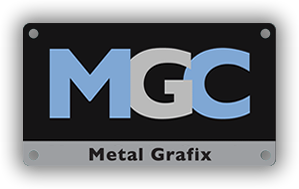Our Processes
We manufacture our ID Tags using carefully selected materials from approved sources that meet our quality standards. We use high quality, photo sensitive, aircraft-quality, anodized aluminum to ensure the best possible result. Upon completion QA ensures that all customer requirements and specifications are met, then appropriate certificates are prepared as required and the product is prepared for shipping.
PermaPlate Process
- A digitally produced image is applied to a Mylar film
- The film masks the photo sensitive anodized aluminum
- With intense ultraviolet light, the image is photo-etched onto the aluminum
- The product is then rinsed to halt the chemical reaction at the optimum time
- It is then boiled in a sealing solution to permanently seal the image within the aluminum
- After a final rinse and dry, the tags are cut to size
DuraPlate Process
- We use high quality, “photo resist” coated, aircraft-quality, anodized aluminum to ensure the best possible result
- A digitally produced image is applied to a Mylar film
- The film masks the photo resist coating
- With intense ultraviolet light, the image is transposed onto the aluminum
- A water rinse/ scrub process removes the image portion of the photo resist coating
- After the tag is dried, the appropriate color dye is applied
- The ID Tag is immersed in stripping solution for a specified period of time
- A water rinse/ scrub process removes the remaining portion of the photo resist coating
- After final rinse and dry
- It is then boiled in a sealing solution to permanently seal the image within the aluminum
- The tags are cut to size
DigiPlate Process
- We use high quality, anodized aluminum to ensure the best possible result
- A high resolution image is digitally printed in the pores of the aluminum
- It is then boiled in a sealing solution to permanently seal the image within the aluminum
- The tags are cut to size
EconoPlate Process
- A digitally produced image is applied to a Mylar film
- An aluminum frame is fitted with a stretched silk mesh (silk screen)
- The screen is encased with a light sensitive photo resist coating
- With intense ultraviolet light, the image is transposed onto the screen through the clear areas of the Mylar film
- The screen is then rinsed to reveal the image portion of the photo resist coating
- The anodized aluminum to be printed is placed in position under the screen
- A small amount of ink is poured on the top side of the screen
- A rubber blade is pulled across the top of the screen pushing the ink through the image portion of the mesh
- The ID Tag with its fresh impression is removed and left to air dry


